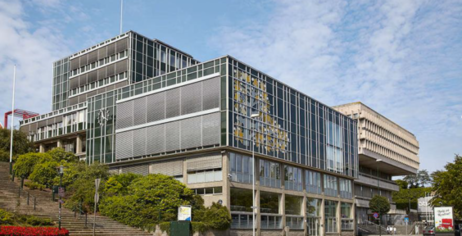Open Innovation Provides Sustainable Building Solutions
Published Jan-08-18Breakthrough:
A decentralized waste management solution for a city hall in Norway.
Company:
Climate-KIC, Norway
The Story:
 In 2015 in Europe, the EU Commissioner for Research, Science and Innovation designated open innovation a political priority for the EU Commission (one of several organizations that manage the European Union). Even though the continent is a major scientific, technological and innovation powerhouse there is a recognition that take-up of new innovative processes is too slow. One area where this is evident is in Europe's cities where on the whole many institutions do not take full advantage of the continent’s innovation potential. Therefore open innovation could be key.
In 2015 in Europe, the EU Commissioner for Research, Science and Innovation designated open innovation a political priority for the EU Commission (one of several organizations that manage the European Union). Even though the continent is a major scientific, technological and innovation powerhouse there is a recognition that take-up of new innovative processes is too slow. One area where this is evident is in Europe's cities where on the whole many institutions do not take full advantage of the continent’s innovation potential. Therefore open innovation could be key. "By actively adopting the concept of open innovation into their business model, we believe that city administrations can simultaneously accelerate and improve the sustainable innovation process, achieve valuable co-benefits, and create blue-green growth in their economy," wrote Kirsten Dunlop, CEO of Climate-KIC in a white paper on city-led open innovation.
Embracing Open Innovation
One of those cities that has embraced open innovation is Stavanger in southwest Norway. It does this in several ways including hosting open innovation competitions such as the Stavanger Smart City Hall contest. It was launched in September 2017 and asked innovators for ideas on how to transform its iconic government building into an example of smart, sustainable city solutions.
The building was constructed in 1960 and since then has only undergone minor renovations. City authorities wanted to give it a major upgrade including the replacement of all technical facilities. They had other ambitions too which were for a building that would do more than just serve the needs of those that work there and visitors to the city. It also had to stand out as an example of smart sustainability in terms of technology and energy management.
The open innovation challenge was organized by the Municipality of Stavanger, Innovation Norway and Climate-KIC, a European-based public-private partnership that is tackling climate change through innovation.
Through their proposals, participating innovators had to address one or more specific points. Among them were: how to produce, use, reuse and manage energy to best suit the needs of the building and how to make sure the building is resilient to future climate change challenges such as increased precipitation.
Smart Waste Solution
From the pool of 22 submissions from six countries, three finalists were selected to present their ideas at a pitch event. The overall winner of this was Petros Timotheou from Switzerland. He presented an alternative approach to handling waste, using it in a circular way to become energy self-sufficient. It is a self-sustainable and financially viable waste ecosystem.
Timotheou’s company Innovopolis has designed a gasification unit that can be customized to any building, allowing its occupants to manage their own waste on site. In return, they receive a supply of clean, off the grid renewable energy entirely produced by the waste. This means there is no more waste collection, no industrial waste treatment and no need to bury waste in landfill sites.
At the time of writing this article information about its integration into the city hall building hadn't been published, but Innovation Norway and Climate-KIC are working with Petros to make it happen.
Next Story »

